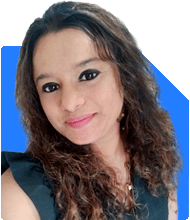43 Year Old Investor – Seeking Investment Advice for Retirement
Nitin Narkhede | Answer |Ask -Follow
MF, PF Expert - Answered on Oct 11, 2024
As a mentor, Nitin has trained over 1,000 individuals, many of whom have seen remarkable financial transformations.
Nitin holds various certifications including the Association Of Mutual Funds in India (AMFI), the Insurance Regulatory and Development Authority and accreditations from several insurance and mutual fund aggregators.
He is a mechanical engineer from the J T Mahajan College, Jalgaon, with 34 years of experience of working with MNCs like Skoda Auto India, Volkswagen India and ThyssenKrupp Electrical Steel India.... more

I will turn 43 years old. I have been investing Rs. 10000 in mutual funds via SIP since 2015. I increased this amount to Rs. 40000 in 2023. My current portfolio value is at Rs.26 lacs. I had redeemed Rs. 11 lacs due to some financial emergency. Apart from that I hold Rs. 24 lacs in Stocks. I have a PPF account with Rs. 9.42 lacs. An LIC policy with Rs. 3 lacs lumpsum and an education plan for my daughter (who's in 8th standard)with sum assured as Rs. 20 lacs. I wish to retire at 60. I have my own home which is loan free. Do I need to make changes in my investment strategy? Thank you.
For retirement at 60, you should continue your SIPs, aiming to grow your mutual fund corpus significantly. Focus on increasing contributions when possible and reviewing the performance of your portfolio regularly. Stocks are volatile, so ensure your stock allocation doesn't overexpose you to risks—gradually moving some of it to safer options like debt funds as you near retirement can help reduce risk. Your PPF and LIC policies act as stable components but may not yield high returns, so prioritizing equity growth until your 50s could be beneficial.
To ensure you're on track for retirement, continue contributing towards your daughter’s education plan and monitor its growth. With a sum assured of Rs. 20 lakh, it should help cover a portion of her higher education costs, but you may want to increase investments or set aside additional funds as tuition fees could rise by the time she enters college.
Considering you want to retire at 60, aim to build a corpus that can comfortably cover your post-retirement expenses for at least 25-30 years. Since your monthly expenditure and lifestyle may evolve, it’s wise to reassess your financial goals periodically.
Given that you're debt-free, have a loan-free home, and have a strong financial portfolio, your current strategy is sound. However, as you get closer to retirement, start focusing on diversifying into safer, low-risk investments such as debt funds, bonds, or retirement-focused products, ensuring stability while preserving capital. Keep a mix of equity for growth and debt for security, adjusting the proportions over time.is important.
If you think that there should be and handholding then consider and Advisor with adequate knowledge and skills to help you achieve your goals
Regards, Nitin Narkhede Founder of Prosperity Lifestyle Hub https://Nitinnarkhede.com
Free Webinar https://bit.ly/PLH-Webinar
You may like to see similar questions and answers below
Ramalingam Kalirajan |10872 Answers |Ask -Follow
Mutual Funds, Financial Planning Expert - Answered on Jun 25, 2024
Ramalingam Kalirajan |10872 Answers |Ask -Follow
Mutual Funds, Financial Planning Expert - Answered on Jul 16, 2024
Ramalingam Kalirajan |10872 Answers |Ask -Follow
Mutual Funds, Financial Planning Expert - Answered on Jul 17, 2024
Jinal Mehta | Answer |Ask -Follow
Financial Planner - Answered on Jun 24, 2024
Ramalingam Kalirajan |10872 Answers |Ask -Follow
Mutual Funds, Financial Planning Expert - Answered on Sep 22, 2025
Radheshyam Zanwar |6735 Answers |Ask -Follow
MHT-CET, IIT-JEE, NEET-UG Expert - Answered on Dec 06, 2025
Dr Nagarajan J S K |2576 Answers |Ask -Follow
NEET, Medical, Pharmacy Careers - Answered on Dec 06, 2025
Mihir Tanna |1090 Answers |Ask -Follow
Tax Expert - Answered on Dec 06, 2025
Ramalingam Kalirajan |10872 Answers |Ask -Follow
Mutual Funds, Financial Planning Expert - Answered on Dec 06, 2025
Radheshyam Zanwar |6735 Answers |Ask -Follow
MHT-CET, IIT-JEE, NEET-UG Expert - Answered on Dec 06, 2025
Radheshyam Zanwar |6735 Answers |Ask -Follow
MHT-CET, IIT-JEE, NEET-UG Expert - Answered on Dec 06, 2025
Radheshyam Zanwar |6735 Answers |Ask -Follow
MHT-CET, IIT-JEE, NEET-UG Expert - Answered on Dec 06, 2025
Dr Dipankar Dutta |1837 Answers |Ask -Follow
Tech Careers and Skill Development Expert - Answered on Dec 05, 2025
Dr Shyam Jamalabad |108 Answers |Ask -Follow
Dentist - Answered on Dec 05, 2025
Dr Shyam Jamalabad |108 Answers |Ask -Follow
Dentist - Answered on Dec 05, 2025


























